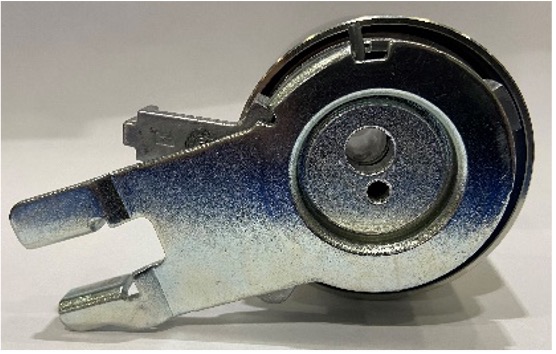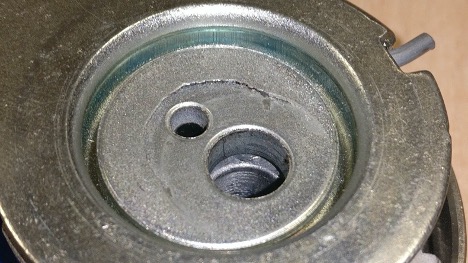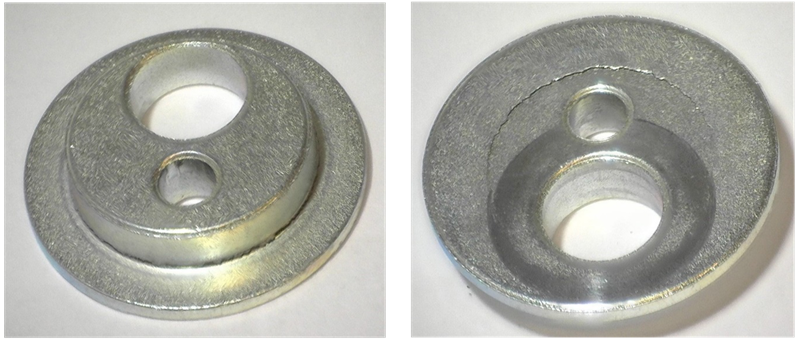In this article, we zoom in on two timing belt tensioners: the T43173, which is included in our K04/KP45509XS kits and can be found in a lot of Volvo models and some Ford models with 2.0, 2.3, 2.4 and 2.5 liter gasoline engines, and the T43139, which is included in our K01/KP15509XS kits and has a very similar design. Mechanics installing these tensioners during belt tensioner replacement have recently been reporting cracks in the tensioner back plate. Our rigorous analysis and tests have revealed that this is not a manufacturing problem; in the majority of cases, an installation error has been the root of the issue.
The tensioner back plate
Put simply, a double-eccentric timing belt tensioner consists of a fixed part and a moving part, with a spring mechanism linking them. Once installed, the back plate occupies a fixed position relative to the engine, being pressed against the motor by the tightening force of the bolt.

[image1] A timing belt tensioner
Cracks created during belt tensioner replacement
Tensioners T43173 and T43139 can crack at the back plate during belt tensioner replacement. Some mechanics have noticed this phenomenon immediately, but in other instances it has remained unnoticed during installation and, only later, manifested itself in the form of axial displacement of the belt caused by a deflection of the tensioner roller rotation plane. Prolonged use with this misalignment can lead to critical malfunctions of the drive, or even to complete failure. So if you notice a crack in the back plate, you should immediately replace the entire tensioner.

[image2] Tensioner back plate break
Importance of adhering to prescribed torque …
In a previous article, we have already stressed the importance of adhering to the prescribed tightening torque for threaded connections. To get the complete tensioner installation guide, we suggest you scan the QR code on the box of the Gates PowerGrip™ kit. In accordance with the instructions, the tensioner must be locked with a tightening torque of only 20 Nm. Exceeding the prescribed tightening torque can cause a fracture where the back plate has a height difference (see the images below), the back plate itself being a casting in the form of a washer of different heights. As the nominal tightening torque is fairly low, it is quite easy to apply too much torque and thus damage the back plate.

[image3] The two sides of the tensioner back plate
… and of positioning the tensioner correctly
Lastly, it is crucial to remember to position the tensioner correctly during installation. Incorrect orientation of the tensioner relative to the engine can also place stress on the back plate during installation.